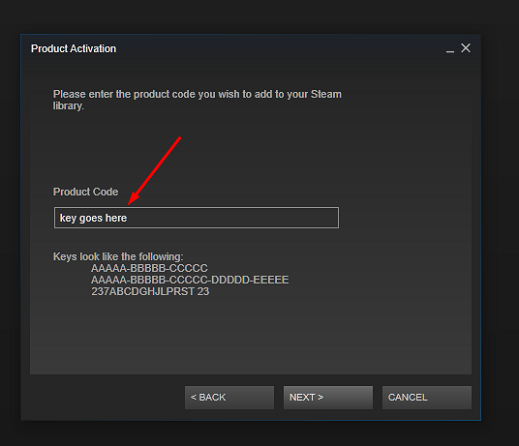

- #Vtrace steam key generator how to
- #Vtrace steam key generator update
- #Vtrace steam key generator software
- #Vtrace steam key generator code
- #Vtrace steam key generator zip
#Vtrace steam key generator code
The logger will evaluate the payload, call the malicious attacker server, and fetch the code written in the object. The Java class will be loaded into memory and executed by the vulnerable log4j server.įor example, an attacker could create a class that uses an object which returns the results of any command, like ls, to an external URL. The javaFactory and javaCodeBase values are then used to build the object location that contains the Java class representing the final payload. In this scenario, the vulnerable log4j server will make an LDAP query to .Ī will then respond with directory information containing the malicious_class attributes: javaClassName: javaCodeBase: objectClass: javaNamingReference javaFactory: Log4j uses special syntax in the form of $ Lack of whitelisting protocols for JNDI client.This attack is a combination of multiple vectors: The LDAP server could be located anywhere on the internet, which means that if an attacker could control the LDAP URL, he would be able to load an object using a Java program, under a server in his control. LDAP ( Lightweight Directory Access Protocol) is an open and cross-platform protocol used for directory services authentication.įrom the Java official documentation, we can see an example of communicating with the LDAP server to retrieve attributes from an object. To be as secure as possible, we recommend updating your log4j library, instead of relying on any of the other patches.įirst, let us dive deeper to understand the components used in this attack: JNDI ( Java Naming and Directory Interface) is a Java API (Application Programming Interfaces) for a directory service that allows you to interface with LDAP or DNS (Domain Name Service) to look up data and resources. GitHub - mubix/CVE-2021-44228-Log4Shell-Hashes: Hashes for vulnerable LOG4J versionsĪs of Monday, December 13th, 2021 13:00 CET, a workaround was found to bypass the trustURLCodebase=false setting.
#Vtrace steam key generator software
You can freely check if your domain is vulnerable to CVE-2021-44228 using open-source testing tools, like GitHub - huntresslabs/log4shell-tester for example.Īlso, in case your application uses log4j below 2.15.0 as a direct package or transitive package, you are vulnerable.Īnother way to verify is to check these hashes in your software inventory, in case you find them, you use vulnerable log4j in your systems: Less than 24 hours after the publication of this vulnerability, there was already a crypto-miner deployed that took advantage of this vulnerability. The impact is wide-scale as log4j is an extremely common logging library used across most Java applications, including in business systems to record log information. Why is it so critical?Īmazon, Apple, Twitter, Minecraft, Cloudflare, Steam: this is only a very partial list of organizations that are impacted by this vulnerability.Īccording to New Zealand CERT (Computer Emergency Response Team) and Greynoise monitoring service, attackers are actively looking for vulnerable servers to exploit this attack, and there are more than 100 distinct hosts that are scanning the internet in order to find ways to exploit such vulnerability. You can find more details in the GitHub commit that fixes this vulnerability.
#Vtrace steam key generator zip
The command to perform such action is: zip -q -d log4j-core-*.jar org/apache/logging/log4j/core/lookup/JndiLookup.class If updating the package is an issue, then in previous releases 2.10.0 through 2.15.0, this exploitable behavior can be mitigated by setting the system property to: log4j2.formatMsgNoLookups=trueĪdditionally, an environment variable can be set for these same affected versions: LOG4J_FORMAT_MSG_NO_LOOKUPS=trueįor releases from 2.0-beta9 to 2.10.0, removing JndiLookup class from the classpath would be the solution.
#Vtrace steam key generator update
The easiest and most recommended way to remediate this vulnerability is to update to log4j version 2.15.0 or later.
#Vtrace steam key generator how to
How to remediate the Log4j RCE vulnerability? This vulnerability is also known as CVE-2021-44228 which has a CVSS (Common Vulnerability Scoring System) score of 10, which is the highest risk possible and was published by GitHub advisory with a critical severity level.Īccording to Google’s open-source scorecard project, which calculate a health score for open-source repositories, log4j received 4.8 (from 1-10, 10 being the best score). This critical 0-day exploit was discovered in the extremely popular Java logging library log4j which allows RCE (Remote code execution) by logging a certain payload. On December 9th, the most critical zero-day exploit in recent years was discovered affecting most of the biggest enterprise companies.


 0 kommentar(er)
0 kommentar(er)
